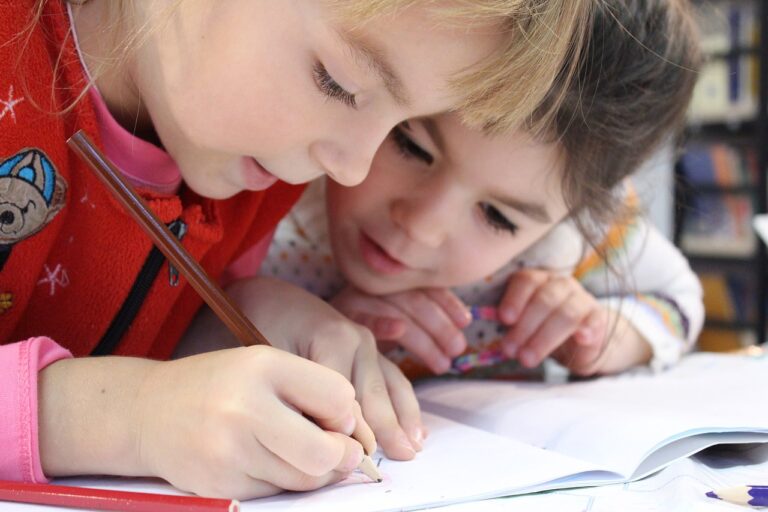Children With ADHD: Recognizing the Signs and How to Help
ADHD, or Attention-Deficit/Hyperactivity Disorder, is a condition that can affect children’s ability to pay attention and control their behavior. It’s important to recognize the signs of ADHD early and know how to help children manage it effectively. This blog post will guide you through understanding ADHD in children, recognizing the signs, getting a diagnosis, and finding the best ways to support your child.
Understanding ADHD in Children
ADHD is a brain condition that makes it hard for children to focus, stay still, and think before they act. It’s not just about being a little more energetic or having trouble sitting through a long class. ADHD can make everyday activities and learning very challenging for children.
Common Misconceptions About ADHD in Children
- Misconception: ADHD is just an excuse for bad behavior.
- Fact: ADHD is a real medical condition that affects how the brain works.
- Misconception: Only boys have ADHD.
- Fact: Both boys and girls can have ADHD, although it may look different in each.
- Misconception: Children will outgrow ADHD.
- Fact: While symptoms can change over time, many children continue to have ADHD into adulthood.
Recognizing the Signs of ADHD in Children
Recognizing the signs of ADHD early can help you get the right support for your child. Here are some common symptoms to look for:
Inattention Signs
- Difficulty Focusing: Your child may have trouble staying on task or paying attention during activities.
- Frequent Mistakes: Simple mistakes in schoolwork, not because they don’t understand, but because they aren’t paying attention.
- Trouble Following Instructions: They might start tasks but quickly lose focus and move on to something else.
- Easily Distracted: Any small noise or movement can pull their attention away from what they’re doing.
Hyperactivity Signs
- Constant Fidgeting: They might be unable to sit still, always tapping their feet or hands.
- Excessive Movement: Running or climbing when it’s not appropriate, like during class or at the dinner table.
- Difficulty Playing Quietly: Even during quiet play, they might make a lot of noise or move around a lot.
- Talking Excessively: They may talk nonstop, even when it’s time to be quiet.
Impulsivity Signs
- Interrupting: They might interrupt conversations or games, not waiting for their turn.
- Trouble Waiting: They find it very hard to wait in lines or for their turn in games.
- Acting Without Thinking: Doing things without considering the consequences, like running into the street without looking.
When to Seek a Professional Evaluation
It can be tricky to know when these behaviors are typical childhood actions or signs of ADHD. Here’s when to consider a professional evaluation:
- Persistent Symptoms: If your child shows these behaviors consistently across different settings (home, school) for at least six months.
- Impact on Daily Life: If these behaviors are affecting their performance at school, their relationships with family and friends, or their ability to do everyday tasks.
- Feedback from Others: Teachers, coaches, and caregivers might notice these behaviors and suggest an evaluation.
Diagnostic Process for ADHD
Getting a proper diagnosis involves several steps:
Comprehensive Evaluation
The doctor will ask about your child’s behavior and how long these behaviors have been happening. They’ll look for patterns and how these behaviors affect daily life.
Standardized Rating Scales
These are checklists that parents and teachers fill out to provide more information about the child’s behavior.
Role of Healthcare Professionals
Pediatricians, child psychologists, and psychiatrists work together to diagnose ADHD. They make sure they understand the child’s behavior in different settings.
Treatment and Management Strategies
Once diagnosed, there are many ways to help children with ADHD manage their symptoms:
Behavioral Interventions
- Behavioral Therapy: Teaches children new ways to control their behavior. For example, they might learn how to take deep breaths when they feel like they can’t sit still.
- Parent Training Programs: These programs help parents learn how to manage their child’s behavior effectively. Parents can learn techniques like setting clear rules and giving positive reinforcement.
- Classroom Strategies: Teachers can use special techniques to help children with ADHD, such as giving them extra time to complete tasks or allowing them to take breaks when needed.
Medication Options
- Stimulant Medications: These are the most common medications for ADHD and can help children focus better. Examples include Adderall and Ritalin.
- Non-Stimulant Medications: If stimulants don’t work well or cause side effects, doctors might try other medications like Strattera.
Medications can be very helpful, but they can also have side effects like trouble sleeping or loss of appetite. It’s important to work closely with the doctor to find the right medication and dosage.
Lifestyle and Home Strategies
- Structured Routines: Having a set schedule can help children know what to expect and stay on track.
- Healthy Diet and Exercise: Eating well and staying active can improve symptoms. Think of a balanced diet with fruits, vegetables, and regular playtime outside.
- Sleep Hygiene: A good bedtime routine can help children with ADHD get enough sleep, which is crucial for managing their symptoms.
Alternative Treatments
- Mindfulness and Meditation: These practices can help children learn to calm their minds and focus better.
- Neurofeedback: This is a special kind of training that helps the brain learn to stay focused.
- Dietary Supplements: Some people find that supplements like omega-3 fatty acids (found in fish oil) can help with ADHD symptoms.
Supporting Your Child with ADHD
Supporting a child with ADHD takes a team effort. Here’s how you can help:
- Build a Support System: Connect with family, friends, teachers, and support groups who understand ADHD.
- Encourage Communication: Talk openly with your child about ADHD. Let them know it’s okay to ask for help.
- Positive Reinforcement: Praise your child for their efforts and achievements, no matter how small.
- Coping Strategies: Teach your child ways to manage their emotions and actions, like taking breaks or using a planner.
Educational Support and Resources
Schools can provide valuable support for children with ADHD:
- Individualized Education Plan (IEP) or 504 Plan: These are special plans that outline accommodations and support your child needs at school.
- School Resources: Many schools have counselors, special education teachers, and other resources to help children with ADHD.
- Community Organizations: Local organizations can offer support groups and resources for families.
Online resources, books, and support groups can also provide valuable information and support:
- CHADD (Children and Adults with Attention-Deficit/Hyperactivity Disorder): Offers resources and support for families.
- ADHD Foundation: Provides information and resources to help manage ADHD.
- Books: “The ADHD Book of Lists: A Practical Guide for Helping Children and Teens with Attention Deficit Disorders” by Sandra F. Rief.
Success Stories and Positive Outcomes
Hearing about other children who have successfully managed ADHD can be very inspiring. These stories show that with the right help and support, children with ADHD can thrive. They can do well in school, make friends, and achieve their goals.
Conclusion
Recognizing the signs of ADHD and getting the right help can make a big difference in a child’s life. Early intervention and ongoing support are key to helping children with ADHD manage their symptoms and succeed. Remember, you’re not alone – there are many resources and people ready to help you and your child on this journey.
Additional Resources
- Support Groups: Organizations like CHADD and the ADHD Foundation offer resources and support.
- Helplines: The National Helpline (1-800-662-HELP) can provide information and support.
- Books: “The ADHD Book of Lists” by Sandra F. Rief.
- Websites: The Substance Abuse and Mental Health Services Administration (SAMHSA) and the National Institute on Drug Abuse (NIDA) offer valuable information and resources.
By understanding ADHD and knowing how to help, you can support your child in living a happy and successful life.





